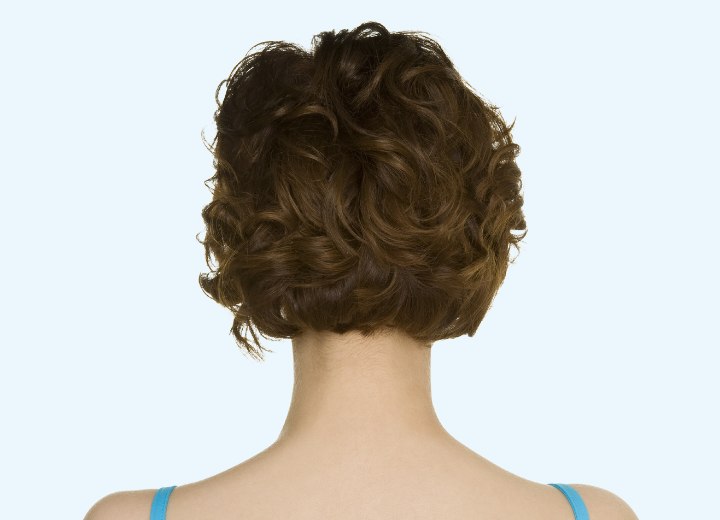Partial Body Perm

A: You can absolutely perm just the back section of your hair, a technique known as a partial perm, as long as your hair is healthy and you take the proper precautions for fine hair. Since the back area has minimal chemical processing compared to your heavily highlighted front sections, it should be in better condition to handle the perming process.
For rod selection, the size you choose will determine your final curl pattern. Since you're looking for body rather than tight curls, opt for larger rods that are at least one inch or 2.5 cm in diameter. A good rule of thumb is to select rods that allow your hair to wrap around them no more than two and a half times. This will give you soft waves and volume rather than springy curls. Gray or white perm rods are typically the largest size and work well for body waves on short hair.
The biggest challenge you'll face with a partial perm is the application process itself. Reaching the back of your head to properly section the hair, wrap it evenly around the rods, and apply the perm solution uniformly is nearly impossible to do alone. Uneven application can result in inconsistent curl patterns, over-processing in some areas, or under-processing in others. You'll want to recruit a trusted friend or family member who can help you with the wrapping and chemical application. Make sure they understand the importance of working quickly and systematically once you begin the process.

Before you begin, it's crucial to perform a strand test on a small, hidden section of hair to see how your hair responds to the chemicals and to determine the optimal processing time. Even though the back of your hair has less chemical damage than the front, it may still react differently than completely virgin hair.
While a skilled hairdresser would certainly be the safest choice for this service, the cost of a partial perm at a salon can range from $60 to $150 depending on your location. If you're comfortable with the risks and have reliable help, doing it at home can be a cost-effective alternative. However, if you have any doubts about your hair's condition or your ability to execute the process properly, it's worth investing in professional service to avoid potential damage that could be costly to repair.
©Hairfinder.com
See also:
Perm one section of the hair
A perm and its toll on your hair
The different perm formulations for different hair types